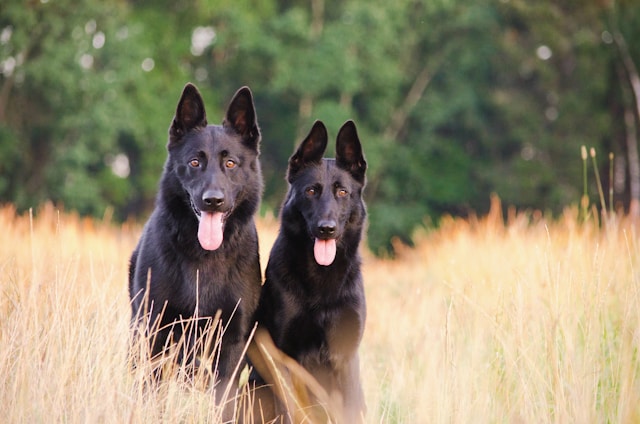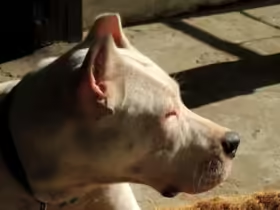As pets age, their needs and health requirements change significantly. Senior dogs and cats require special attention to ensure they remain comfortable, happy, and healthy in their golden years. Understanding the aging process and providing appropriate care is crucial for maintaining your pet’s quality of life. In this comprehensive guide, we’ll explore the truths about aging in pets and offer practical advice on how to care for your senior dog or cat.
1. Understanding the Aging Process
Changes in Physical Health
- Reduced Mobility: Older pets often experience arthritis or joint issues, leading to reduced mobility. They may have difficulty jumping, climbing stairs, or getting up from a lying position.
- Decreased Senses: Aging can affect a pet’s senses. Older dogs and cats may experience diminished vision, hearing, and sense of smell, which can impact their overall behavior and comfort.
- Changes in Coat and Skin: The coat of senior pets may become thin or graying, and their skin may become less elastic. They may also be more prone to skin conditions and infections.
Changes in Internal Health
- Metabolism Slows Down: Senior pets often have a slower metabolism, which can lead to weight gain or loss. Their dietary needs may change, requiring adjustments in their food intake and type.
- Organ Function: Aging affects various organs, such as the kidneys, liver, and heart. Conditions like kidney disease, heart disease, and diabetes are more common in older pets.
Behavioral Changes
- Cognitive Decline: Just like in humans, pets can experience cognitive decline as they age. This can lead to confusion, disorientation, and changes in sleep patterns, a condition sometimes referred to as canine or feline cognitive dysfunction syndrome.
- Altered Social Behavior: Senior pets may become more withdrawn or less active. They might also exhibit changes in their social interactions, either seeking more attention or becoming more reserved.
2. Health Monitoring and Veterinary Care
Regular Check-Ups
- Increased Vet Visits: Senior pets should have more frequent veterinary check-ups, ideally every 6 months. Regular visits allow for early detection of health issues and timely interventions.
- Comprehensive Exams: Ensure your vet performs comprehensive exams that include blood work, urine tests, and possibly X-rays or ultrasounds to monitor internal health.
Managing Chronic Conditions
- Medications: Many senior pets require medications to manage chronic conditions such as arthritis, diabetes, or heart disease. Follow your vet’s instructions carefully and monitor for any side effects.
- Dietary Adjustments: Specialized diets may be recommended to address specific health issues. For example, low-sodium diets for heart disease or renal diets for kidney issues can be beneficial.
Dental Care
- Regular Cleanings: Dental health is crucial for older pets. Schedule regular dental cleanings to prevent or address dental disease, which can impact overall health and comfort.
- Home Care: Brush your pet’s teeth regularly and provide dental treats or toys that help reduce plaque and tartar buildup.
3. Nutrition and Weight Management
Balanced Diet
- Senior-Specific Foods: Choose high-quality senior pet food that is formulated to meet the nutritional needs of older dogs and cats. These diets are often lower in calories and higher in essential nutrients to support aging joints and organs.
- Adjust Portions: Monitor your pet’s weight and adjust food portions accordingly. Overweight pets may need a lower-calorie diet, while underweight pets may require more calorie-dense food.
Supplements
- Joint Support: Supplements like glucosamine and chondroitin can help support joint health and reduce arthritis symptoms.
- Omega Fatty Acids: Omega-3 fatty acids can improve skin and coat condition and support overall health. Consult your vet before adding any supplements to your pet’s diet.
Hydration
- Encourage Water Intake: Ensure your pet has access to fresh water at all times. Proper hydration is essential for maintaining kidney function and overall health.
- Wet Food: Incorporating wet food into your pet’s diet can help increase their water intake, especially if they are not drinking enough.
4. Exercise and Mental Stimulation
Gentle Exercise
- Low-Impact Activities: Opt for low-impact exercises that are easy on your pet’s joints, such as short walks, gentle play, or swimming. Avoid strenuous activities that could exacerbate joint pain or discomfort.
- Encourage Movement: Provide opportunities for your pet to move around and stay active, even if it’s just gentle stretching or short bursts of play.
Mental Stimulation
- Interactive Toys: Use puzzle toys or treat-dispensing toys to keep your pet’s mind engaged. Mental stimulation is important for cognitive health and can help alleviate boredom.
- Training and Enrichment: Incorporate training sessions or new tricks into your routine to keep your pet’s mind sharp and provide a sense of accomplishment.
5. Comfort and Adaptations
Home Modifications
- Non-Slip Flooring: Install non-slip mats or rugs to help prevent slips and falls, especially if your pet struggles with mobility.
- Easy Access: Provide ramps or steps to help your pet access their favorite spots, like the bed or couch. Ensure their living environment is easy to navigate.
Comfortable Bedding
- Orthopedic Beds: Invest in orthopedic or memory foam beds that provide extra support for aging joints. Ensure the bed is easily accessible and located in a quiet, comfortable area.
- Heating Pads: For pets with arthritis or joint pain, heating pads or heated beds can offer soothing relief. Make sure they are safe and used under supervision.
Grooming and Hygiene
- Regular Grooming: Keep up with regular grooming to maintain your pet’s coat and skin health. Older pets may require more frequent brushing to prevent matting and to check for skin issues.
- Nail Trimming: Regular nail trimming is important, as long nails can affect your pet’s ability to walk comfortably.
6. Emotional Support and Quality of Life
Bonding Time
- Extra Attention: Spend quality time with your senior pet, offering affection and companionship. This helps strengthen your bond and provides emotional comfort.
- Routine: Maintain a consistent daily routine to provide a sense of security and stability.
End-of-Life Considerations
- Quality of Life Assessment: Regularly assess your pet’s quality of life, considering factors like pain, mobility, and overall enjoyment of life. Your vet can help evaluate whether your pet’s needs are being met and if any changes should be made.
- Palliative Care: If your pet is nearing the end of their life, palliative care can help manage pain and ensure their comfort. Discuss options with your vet to provide the best care possible.
Conclusion
Caring for senior dogs and cats requires understanding and attention to their changing needs. By recognizing the signs of aging, maintaining regular veterinary care, adjusting their diet, providing gentle exercise, and making necessary home modifications, you can ensure your aging pet remains comfortable and happy. Emotional support and quality of life considerations are also crucial in providing the best care for your senior companion. With the right approach, you can help your beloved pet enjoy their golden years with dignity and comfort.











Leave a Reply